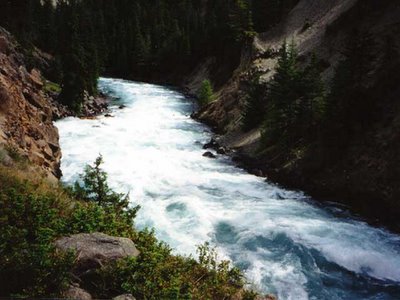Making things more real
After spending a week mulling over this idea and talking with Allison I decided to talk with Dave Berry, paddling partner and long time friend. I emailed Dave the idea that I had to give him a heads up on what I was thinking. I gave him a call the other night and we talked about the possibility of pulling this off. Initially I was thinking of trying to do this in August of 2006 but after talking with Dave we decided that it could be done this August. As long as the ball got rolling.
The ball is rolling, I picked up a couple books from the library. One, Voyage Into a Summer Sun, by Robin Cody, is about a man's journey from the source of the Columbia River in Canada to the Pacific Ocean on the Oregon/Washington border. The other is whitewater descriptions of the Salmon River. The Salmon river flows about 400 miles to the confluence of the Snake River. Our trip would actually start at river mile (RM) 379 in the town of Stanley, Idaho.
I wrote a couple emails to outfitters that run the whitewater sections that I have not run and asked for some information. Several got back to me and gave me lots of good information and told us to stop by at the beginning of the trip.
Have contacted Idaho Rivers United and Save Our Wild Salmon about giving support to this trip. Both organizations are non-profits that are working towards returning sustainable populations of salmon and steelhead to the Pacific Northwest. I am sure it will take some time to hammer out details.
The ball is rolling, I picked up a couple books from the library. One, Voyage Into a Summer Sun, by Robin Cody, is about a man's journey from the source of the Columbia River in Canada to the Pacific Ocean on the Oregon/Washington border. The other is whitewater descriptions of the Salmon River. The Salmon river flows about 400 miles to the confluence of the Snake River. Our trip would actually start at river mile (RM) 379 in the town of Stanley, Idaho.
I wrote a couple emails to outfitters that run the whitewater sections that I have not run and asked for some information. Several got back to me and gave me lots of good information and told us to stop by at the beginning of the trip.
Have contacted Idaho Rivers United and Save Our Wild Salmon about giving support to this trip. Both organizations are non-profits that are working towards returning sustainable populations of salmon and steelhead to the Pacific Northwest. I am sure it will take some time to hammer out details.


